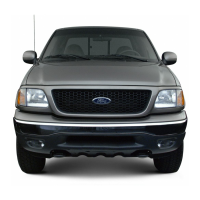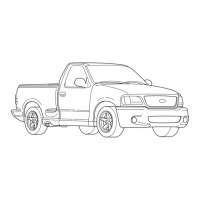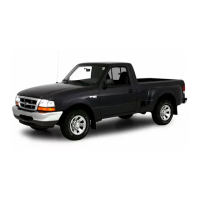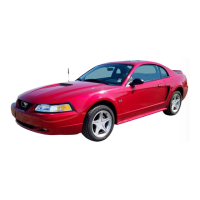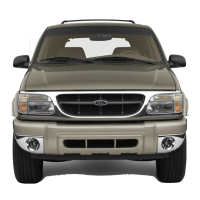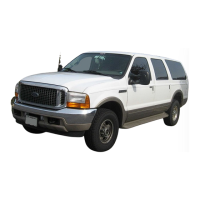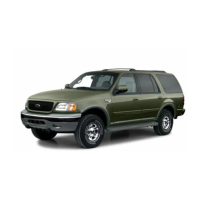SECTION
G
GENERAL
MAINTENANCE
AND
ADJUSTMENTS
TIMING
THE FUEL INJECTION
PUMP
If
at any time
the fuel injection
pump is removed
the
pump must
be correctly
timed when
re-installed.
Proceed
as follows:
(a) C.A.V.
PUMP (Figure
G5J
Before
fully tightening
the
three pump retaining
bolts align the
mark
on
the
pump mounting
flange
with
the zero mark
on the
engine front
mounting
plate, the
pump will then
be correctly
timed.
(b) SIMMS
PUMP (figure
G6)
Remove
the flywheel
inspection
cover, Figure
G1
, and the cover from
the
rear
of the injection
pump.
The engine is
correctly
timed if
a suitable
pointer
(1). placed in
the
vee-notch
in the pump
camshaft aligns
with
the mark
on the
pump
housing
when
the flywheel mark
is set
to 19
:
BTDC
(before
top dead
centre)
on the
compression
(both valves
closed
on No.
1 cylinder)
stroke.
If the timing marks
are not
aligned:
1. Remove
the inspection
plate
from the
front of
the engine timing
cover (for
easier access, remove
the lower
radiator
hose after draining
the radiator
coolant).
2. Slacken
the three
pump drive
gear securing
bolts
(2)
and rotate
the pump until
the marks
(3) are aligned.
3. Tighten the
gear
securing bolts (if
removed,
replace
the lower
radiator
hose, and refill
the radiator).
4. Replace
the injection
pump
end cover
and flywheel
inspection
cover.
Finally,
bleed
the system.
ENGINE SPEED
ADJUSTMENTS
The idling
and maximum
no load
speeds
of the engine
are set
by adjustments
on the
fuel pump.
The maximum
speed
(no load) is
set at the factory
to
2225-2275
rpm for
the Ford
2/3000
2425-2475
rpm for
the Ford
4000
2325-2375
rpm for
the Ford
5000
The
correct
idle speed is
600-700
rpm and if
either the
idling or maximum
no
load speeds
are incorrect,
consult
your
Authorised Ford
Tractor
Dealer.
GENERAL
MAINTENANCE
AND
ADJUSTMENTS
SECTION G
WHEELS
REPACKING THE
FRONT
WHEEL BEARINGS
(figure
G7J
(sec also Section F)
With the
tractor on level ground, lock
the rear
wheels and jack up one of
the
front
wheels. Remove
the hub cap
(1
),
the split
pin
(2),
the slotted
hexagonal
nut
(3),
tho thrust
washer
(4)
and the
outer
bearing
(5),
then the wheel and
hub
assembly
(6).
Finally
remove the grease
retainer
(7)
from the rear
of the
hub, and the inner
bearing (8).
Thoroughly clean all
parts in a
suitable solvent and
allow
to
dry naturally. Do
not use
compressed air.
Inspect the
bearing cone/roller assemblies
for excessive
discoloration or
wear of the
rollers; similarly
check the bearing cups.
Repack
the cones,
and pnck the space
between the
bearing cups in the hub,
with
clean No. 2 Lithium
typo grease,
Place
a
film of grease on
tho spindle.
Re-install the
assembly using
the reverse of the removal
procedure fitting
a
new
grease retainer
in the rear of the hub.
Tighten the slotted nut.
while turning
the wheel, until a slight drag
is felt. Then
slacken off
the nut
until the nearest slot lines up
with
the hole in the spindle.
Install a new
splitpin and
replace the hub cap.
Repeat the
operation for the
opposite front wheel.
It is
recommended
where operating
conditions are
consistently wet and
muddy that
wheel bearings
should be greased
more frequently than every
600
hours. To
simplify this
operation special hub caps
(9)
incorporating
grease
nipples
are
available as an accessory.
BRAKES
i on l BRAKE ADJUSTMENT
Whenever the travel of
the foot brake pedals
becomes excessive,
or if the travel
I
.i one
is
unequal to that of the
other, adjustment
should be made in the following
in.-innur.
